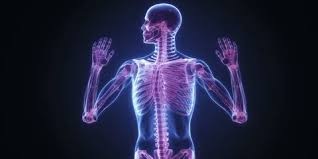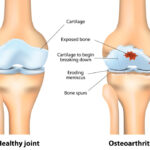DJD ICD 10, more commonly known as osteoarthritis, is one of the most prevalent chronic musculoskeletal conditions worldwide. As healthcare systems rely heavily on standardized coding for documentation, reimbursement, and treatment planning, understanding the correct ICD-10 code for DJD is essential for healthcare providers, coders, and even patients.
In this article, we’ll explore what DJD is, why ICD-10 coding is important, the most relevant DJD ICD-10 codes, common documentation challenges, and how accurate coding benefits the healthcare system.
What is DJD (Degenerative Joint Disease)?
DJD ICD 10, or osteoarthritis, is a chronic condition characterized by the breakdown of cartilage in the joints. As the protective cartilage wears away, bones begin to rub against each other, causing:
-
Pain and stiffness
-
Swelling and inflammation
-
Decreased joint mobility
-
Bone spurs or deformities
It is most common in weight-bearing joints such as the knees, hips, and spine but can also affect the hands, shoulders, and other joints.
Risk Factors for DJD
-
Aging (most common in adults over 50)
-
Obesity and excess weight
-
Previous joint injury
-
Family history of osteoarthritis
-
Repetitive stress on joints (occupational or athletic)
Because of its high prevalence, DJD is one of the leading causes of disability worldwide, making proper documentation and coding critical.
Why ICD-10 Coding for DJD Matters
The International Classification of Diseases, 10th Revision (ICD-10) is the global standard for coding diseases and health conditions. Using the correct DJD ICD-10 code is important for:
-
Accurate Diagnosis Documentation – Ensures the patient’s condition is properly recorded in medical records.
-
Billing and Reimbursement – Insurance companies and government programs rely on ICD-10 codes to approve claims.
-
Treatment Planning – Proper coding provides clarity on the affected joint and severity.
-
Research and Public Health Data – Helps track prevalence, risk factors, and outcomes related to DJD.
Without correct ICD-10 coding, patients may face delays in treatment, denied insurance claims, or incorrect care pathways.
DJD ICD-10 Codes: Key Categories
The ICD-10 codes for DJD fall under the M15–M19 category, which covers arthrosis (osteoarthritis). The specific code depends on the type, location, and laterality of the joint involved.
Here are the most commonly used codes:
1. Polyosteoarthritis (Multiple Joints)
-
M15.0 – Primary generalized (osteo)arthritis
-
M15.9 – Polyosteoarthritis, unspecified
2. Osteoarthritis of the Hip
-
M16.0 – Bilateral primary osteoarthritis of hip
-
M16.1 – Unilateral primary osteoarthritis of hip
-
M16.9 – Osteoarthritis of hip, unspecified
3. Osteoarthritis of the Knee
-
M17.0 – Bilateral primary osteoarthritis of knee
-
M17.1 – Unilateral primary osteoarthritis of knee
-
M17.9 – Osteoarthritis of knee, unspecified
4. Osteoarthritis of the Hand
-
M18.0 – Primary osteoarthritis of first carpometacarpal joints, bilateral
-
M18.9 – Osteoarthritis of first carpometacarpal joint, unspecified
5. Osteoarthritis of Other Joints
-
M19.0 – Primary osteoarthritis of other joints
-
M19.9 – Osteoarthritis, unspecified site
Coding Example Scenarios
To better understand how DJD ICD-10 coding is applied, let’s look at a few real-world examples:
-
Case 1: A 65-year-old woman diagnosed with bilateral knee osteoarthritis.
-
Correct Code: M17.0 (Bilateral primary osteoarthritis of knee).
-
-
Case 2: A patient presents with osteoarthritis of the right hip, unspecified type.
-
Correct Code: M16.9 (Osteoarthritis of hip, unspecified).
-
-
Case 3: A 58-year-old male has osteoarthritis in multiple joints without specification.
-
Correct Code: M15.9 (Polyosteoarthritis, unspecified).
-
Common Documentation and Coding Challenges
Coding DJD accurately requires detailed physician documentation. Here are some common challenges:
-
Laterality not specified – Whether the condition affects the left, right, or both joints must be clearly documented.
-
Type not specified – Coders need to know if it’s primary osteoarthritis (age-related) or secondary (resulting from injury or disease).
-
Multiple sites – When multiple joints are affected, coders must determine whether it qualifies as polyosteoarthritis or needs separate site-specific codes.
-
Unspecified codes – While “unspecified” codes like M19.9 can be used, they are less accurate and may lead to claim denials.
Best practice: Providers should always document the location, laterality, and type of DJD to ensure coding accuracy.
Benefits of Accurate DJD ICD-10 Coding
When DJD is coded correctly, the benefits extend beyond reimbursement:
-
Improved Patient Care – Clinicians have precise data to guide treatment.
-
Efficient Insurance Processing – Reduces claim rejections and delays in payment.
-
Better Healthcare Analytics – Helps in research studies and identifying trends.
-
Resource Allocation – Healthcare organizations can better plan resources for orthopedic and rheumatology services.
-
Public Health Tracking – Governments can use data to design preventive health strategies.
DJD ICD-10 vs. ICD-9
In the older ICD-9 system, osteoarthritis was broadly coded under 715.x categories. ICD-10 offers greater specificity by:
-
Defining the exact joint involved (hip, knee, hand, spine, etc.)
-
Identifying laterality (right, left, or bilateral)
-
Indicating whether osteoarthritis is primary, secondary, or unspecified
This shift improves documentation accuracy and reflects the real-world complexity of DJD.
The Future of DJD Coding
As medical knowledge advances, ICD coding systems continue to evolve. With the eventual transition to ICD-11, coding for musculoskeletal diseases like DJD will likely become even more detailed, possibly integrating imaging findings, disease progression, and genetic factors.
For now, accurate ICD-10 coding remains the backbone of documentation in DJD cases, ensuring patients receive appropriate care and providers receive fair reimbursement.
Conclusion
DJD ICD 10, or osteoarthritis, is one of the most common chronic conditions affecting millions of people globally. Proper ICD-10 coding for DJD is essential for diagnosis documentation, treatment planning, insurance reimbursement, and healthcare research.
The most relevant DJD ICD-10 codes fall within the M15–M19 categories, covering everything from polyosteoarthritis to site-specific osteoarthritis of the hip, knee, and other joints.
By ensuring detailed documentation—including laterality, type, and joint site—providers and coders can avoid errors, support accurate billing, and improve patient outcomes. Ultimately, mastering DJD ICD-10 codes benefits the entire healthcare ecosystem, from individual patients to national health systems.





